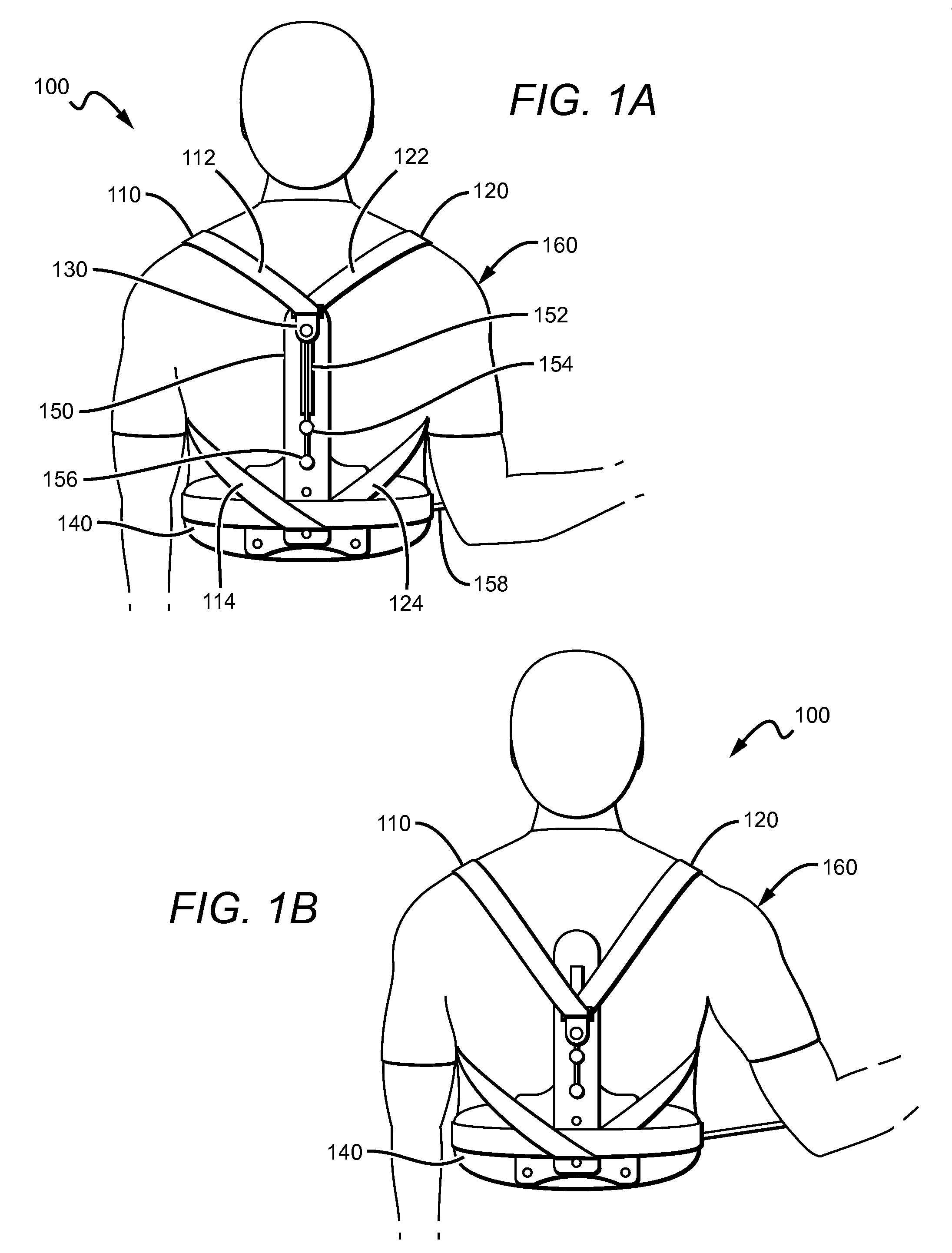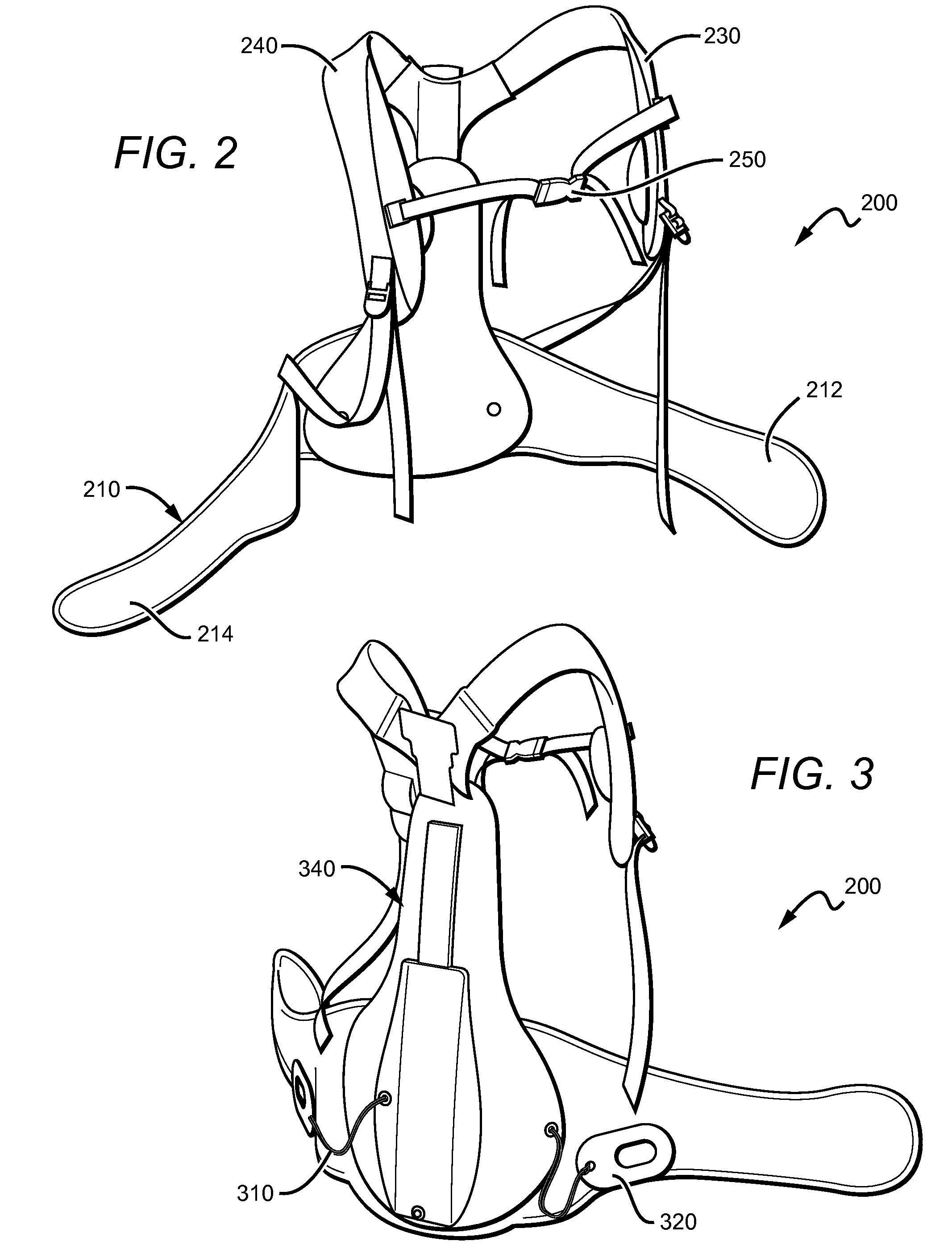Hyperextension Brace
- Summary
- Abstract
- Description
- Claims
- Application Information
AI Technical Summary
Benefits of technology
Problems solved by technology
Method used
Image
Examples
Embodiment Construction
[0025]In FIGS. 1A-1B, an exemplary posture correction brace 100 has a pair of shoulder straps 110 and 120 coupled to a hinge 130 that is joined to a belt 140 via slider 150. While shoulder straps 110 and 120 are coupled to hinge 130 using a thin hole, the shoulder straps could be coupled to the hinge using any suitable loop. Shoulder straps 110 and 120 comprise a single strap that divides into two separate components through hinge 130. Shoulder straps 110 and 120 has posterior sections 112 and 122, respectively and anterior sections 114 and 124, respectively. Posterior sections 112 and 122 are coupled to hinge 130, which draws those sections inferiorly along wearer 160's back as hinge 130 is drawn downwards along slider 150. Anterior sections 114 and 124 are coupled to anterior portion 142, and then around the waist of wearer 160. The anterior ends (not shown) straps 110 and 120 then meet at the front of wearer 160, such that wearer 160 could then tighten belt 140 by manipulating th...
PUM
 Login to View More
Login to View More Abstract
Description
Claims
Application Information
 Login to View More
Login to View More - R&D
- Intellectual Property
- Life Sciences
- Materials
- Tech Scout
- Unparalleled Data Quality
- Higher Quality Content
- 60% Fewer Hallucinations
Browse by: Latest US Patents, China's latest patents, Technical Efficacy Thesaurus, Application Domain, Technology Topic, Popular Technical Reports.
© 2025 PatSnap. All rights reserved.Legal|Privacy policy|Modern Slavery Act Transparency Statement|Sitemap|About US| Contact US: help@patsnap.com



